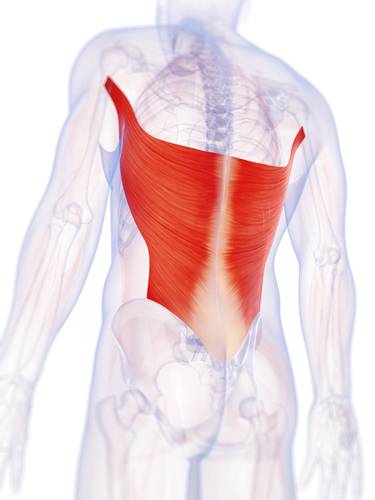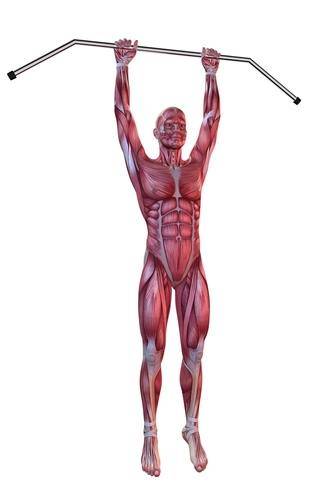There’s a pandemic sweeping the nation. Despite a rise in gym memberships, and more and more people training than ever before, a terrible affliction still holds the country’s gym-goers in its hands. What is this horrendous condition?
Imaginary lat syndrome.
The Urban Dictionary defines imaginary lat syndrome as:
… a common case of someone, typically a male, who believes they are rather muscular when in reality this isn’t the case. Those with Imaginary Lat Syndrome can typically be seen walking uncomfortably while flaring their small lat muscles and tensing their arms in an attempt to look “jacked.” In reality, it appears douchey and looks like a toothbrush has been shoved up their ass. Manlets are at high risk of falling victim due to overcompensation reasons.
Another way to spot someone with ILS is if they’re walking around, looking like they’re holding a rolled-up carpet under each arm.
These guys have probably got fairly impressive bench presses (due to their commitment to international bench press Monday,) and their biceps may be a little beefier than the average Joe’s, but their lats resemble that of a gym newbie’s. Aside from those protruding pecs and beneath those boulder shoulders, there’s nothing that looks even remotely muscular.
Are you sitting there screaming, “Wait! This is me, I have it, and what can I do?” Fear not. Imaginary lat syndrome might be caused by years of neglect, but it can be remedied by making a few simple switches to your training routine.
Big Lats: What’s the Deal?
When was the last time you heard someone say, “Yeah, that guy’s in shape, but his lats are too big”? Yep, never. It just doesn’t happen. A big, wide back, so huge it blocks out the sunlight will only ever be an asset to your overall physique.

And apart from the aesthetic quality, the lats also have several vital physiological functions. Due to their sheer size and the fact they have numerous points of origin along the spine, the ribs, sacrum and scapular, all inserting at the humerus (upper arm), they take care of many different actions.
These include adducting, medially rotating, and extending your arm from the shoulder joint. A stronger, more stable scapular and upper-back will aid shoulder stability, which is essential if you’re involved in any type of throwing sport.
Thus, stronger lats can make you a better bench presser or help balance out your physique to combat those years of over-training your chest and shoulders and neglecting your back.
Give Me the Prescription for ILS
If your back workout currently takes place only on days when your chest isn’t feeling sore or if it consists of little more than a few sets of pulldowns and a dumbbell row or two while talking shop with the hot personal trainer, it’s time to get a bit more serious about lat training. We’re talking twice a week.
Leave three to four days between sessions, but make sure you get your two weekly workouts in. This could either mean doing two back-specific workouts, or a better approach would be to follow an upper-lower split, hitting each session twice a week, but starting both upper-body workouts with your back exercises.
The Exercises
You could probably reel off eight, maybe ten, possibly even a dozen back exercises if pushed, but how many of those actually get you pumped up to go and train? You know plenty of back exercises, but never do them, so something’s got to be up.
And this is exactly where a lot of people fall down in curing their imaginary lat syndrome – back exercises just aren’t that exciting.
With that in mind, here are four awesome lat-building moves that will get your training mojo working overtime, strengthen your back, and give you some lats you can actually be proud of for the first time.
The Exercises: 1. The Mighty Chin-Up
Before getting fancy, learn to do chin-ups. If you can’t do ten strict bodyweight chin-ups yet, that’s your first port of call. No other exercise builds the lats like chin-ups.

You can throw pull-ups into the mix too. While the terms are generally interchangeable, and different people use one or the other to describe a different type of bodyweight pull, chin-ups are usually thought of as being performed with a close, underhand grip, while pull-ups are wider with an overhand grip.
You need some form of chin-up in every single back workout. I suggest starting here.
The Exercises: 2. Pull-Downs? You Serious?
Pull-downs are often considered the skinny dude’s version of the pull-up, and while I’d argue chin-ups and pull-ups are your number one weapon in the fight against imaginary lat syndrome, there’s most certainly a place for pulldowns too.
My two favorite pulldown variations are the neutral-grip pulldown, performed with your palms facing inward, and the single-arm pulldown.
The neutral grip places your shoulders in a more natural position, and means you get a bigger contraction at the bottom of each rep, whereas single-arm pull-downs help you activate those pesky lat muscle fibers.
Not being able to “feel” the lats is a common problem among wannabe strength-builders.
This is generally due to a poor mind-muscle connection, but in my experience, switching to single-arm pull-downs suddenly cures this. The lats kick in, you stop feeling the exercise in your biceps, forearms, and shoulders, and start building some monster wings. If you’re still having trouble, try placing your non-working hand on your working lat and this should do the trick.
The Exercises: 3. Going Straight
An isolation exercise in an article on lat training? Yup, despite the fact it seems in vogue to hate isolation exercises and promote the use of compound moves in the “functional training” sphere, isolation moves absolutely have a place when working your lats.
The straight-arm pulldown really gets that mind-muscle connection going once again. Use a rope attachment on the high pulley of a cable machine, take a step back, and start each rep with a big stretch. Then squeeze your lats hard as you bring your hands in to the side of your waist. These work well as a pre-exhaust exercise before launching into your regular pull-downs.
The Exercises: 4. Put Your Chest to Use
You’ve spent hundreds of workouts building that impressive set of pecs, now it’s time to put them to use. They’ll be used to help support you on this exercise, as we perform some chest-supported rows.
Your gym might have a machine for this, in which case feel free to use that. If not though, just set a bench to around a thirty-degree incline, lie face down on it, and grab a dumbbell in each hand. Start with your arms hanging straight down, then row the dumbbells up to your sides, squeezing your lats hard on every rep.
Position is crucial on these. While you’ll hit your lats no matter how you do this exercise, you’ll get much more bang for your buck if you bring the dumbbells up slightly lower – around waist height – rather than higher up.
Rowing the dumbbells up to your ribs will transfer the stress onto your traps and rhomboids, which isn’t what we want at the moment.
You can break the rules here as well, and wind up the functional crowd even more by using wrist straps.
Ideally, you’d have a grip of iron and not need straps, but if you find your grip’s giving out before your lats are fully fatigued, then strap up and go to town. Make sure you do some grip-strengthening exercises like plate pinches and fat grip work in your other sessions, though.
Lighting Up Lat City
Keep things simple by picking just two exercises each workout and sticking with these for four weeks.
This can be any combo and any variation of the four listed above. You might choose weighted chin-ups and machine chest-supported rows in your first workout, and neutral grip pull-downs and straight-arm pull-downs on your second, for instance.
Follow an undulating loading scheme. So your program would look something like this:
- Week 1: 3 sets of 12-15 reps on all exercises
- Week 2: 4 sets of 8-10 reps on all exercises
- Week 3: 5 sets of 5-6 reps on all exercises
- Week 4: 2 sets of 20 using a light weight (This is essentially a mini deload)
On week five, go back to 3 sets of 12-15, either on different exercises, or on the same exercises as weeks one to four, but using a bit more weight, or aiming to beat your reps from the last cycle. Do this, and imaginary lat syndrome will be but a distant memory.
Photos courtesy of Shutterstock.






